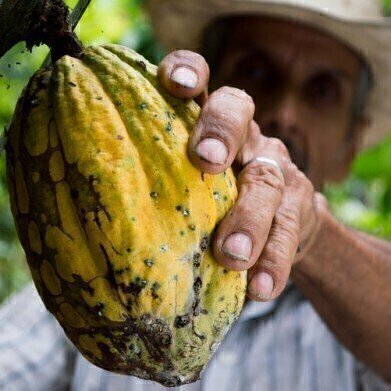LC-MS
Protecting Cacao from Rot with Help from Chromatography
Jan 26 2021
A world without football, new clothes or your phone would be hard to take. Lockdown deprived footy fans of sport for a few months and that was quite hard to take. We seemed to have survived without new clothes for awhile as the shops have shut and sales are significantly lower than usual – but that is an easily reversed trend once vaccines have released us from the current grip of Covid-19. And more people are putting their phones to one side as we reconnect with nature, although they are not likely to be going anywhere soon.
But imagine a world without chocolate – it could be a very real prospect unless we curb climate changes and discover new ways to keep the cacao crops strong and healthy. Whilst climate change is realistically a political and governmental decision, fighting to keep cacao trees healthy is in the realm of scientists as discussed in a recent paper in the journal frontiers in Plant Science. Researchers from Pennsylvania State University have used chromatography to discover a what makes some varieties of cacao disease resistant. Grab a bar of chocolate as we find out about how clovamide could become chocolate lover’s new best friend.
Fungal disease eating away at chocolate
Fungal disease is a significant problem for cacao growers – and that means it is a serious problem for chocolate lovers. A disease called ‘black pod rot’ that is caused by a fungus – Phytophthora – can cause the loss of 30% of the annual cacao crop and kill up to 10% of cacao trees each year. But the fungus doesn’t affect all cacao trees the same. Some varieties have a higher resistance to the fungus.
In the paper referenced above - Clovamide, a Hydroxycinnamic Acid Amide, Is a Resistance Factor Against Phytophthora spp. in Theobroma cacao – researchers at Penn State used liquid chromatography-tandem mass spectrometry (LC-MS/MS) to perform untargeted metabolomics on the leaves two different cacao genotypes which displayed different tolerance levels towards Phytophthora. The use of LC-MS is discussed in the article LC-MS Analysis of Therapeutic Oligonucleotide and Related Products. A comparison of TQ and Q-TOF Systems.
Disease resistant strain
The team found that the leaves of a cacao variety known as ‘Scavina 6’ had significantly higher levels of a compound called clovamide compared to a fungus susceptible variety called ‘Imperial College Selection 1’. The concentration of clovamide, a known antimicrobial compound, was up to 58 times higher in the fungal resistant variety.
In a press release, the paper’s lead author stated:
“This is the first time that clovamide has been implicated in cacao resistance to pathogens, and the innovative method we used to measure the compound in the leaves could have a major impact in the quest to develop highly productive, disease-resistant varieties of cacao.”
The research could pave the way for more disease resistant strains of cacao – helping to save the World’s chocolate supply forever. Just the environment to fix now.
Digital Edition
Chromatography Today - Buyers' Guide 2022
October 2023
In This Edition Modern & Practical Applications - Accelerating ADC Development with Mass Spectrometry - Implementing High-Resolution Ion Mobility into Peptide Mapping Workflows Chromatogr...
View all digital editions
Events
Apr 23 2024 Kintex, South Korea
Apr 23 2024 Seoul, South Korea
Apr 28 2024 Montreal, Quebec, Canada
May 05 2024 Seville, Spain
May 15 2024 Birmingham, UK














